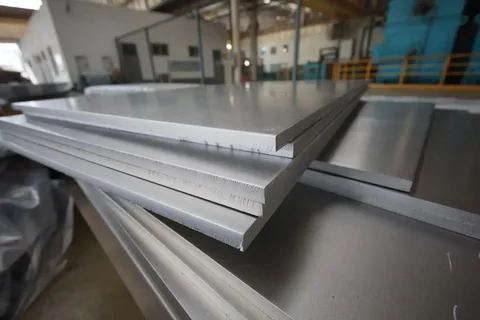Aluminium plate is a versatile and widely used material in industries such as aerospace, construction, marine, and manufacturing. Its strength, light weight, and corrosion resistance make it ideal for both structural and aesthetic applications. However, to meet specific project needs, raw aluminium plates often require customization. This is where custom cutting and fabrication options for aluminium plate become essential.
Why Custom Fabrication Matters
Every industry and project has unique requirements. Standard aluminium plates may not meet the size, shape, or finish specifications needed for optimal performance. Custom fabrication allows for:
- Precise dimensions tailored to your project.
- Complex shapes and patterns.
- Integration of drilled holes, welded joints, or specialty finishes.
- Reduced waste and time savings on-site.
By choosing custom cutting and fabrication options for aluminium plate, businesses can streamline their processes and ensure the final product fits perfectly.
Common Cutting Techniques
There are several cutting methods used depending on the desired finish, thickness, and precision. The most common techniques include:
1. Waterjet Cutting
Waterjet cutting uses high-pressure water, often mixed with abrasives, to cut through aluminium without generating heat. It provides clean edges and is ideal for intricate designs or thick plates.
2. Laser Cutting
Laser cutting offers high precision and is suitable for thinner aluminium plates. It’s a fast process and allows for tight tolerances, making it perfect for industries that require accuracy, such as aerospace or electronics.
3. Plasma Cutting
Plasma cutting uses a high-velocity jet of ionized gas to cut through aluminium. It’s more suited for medium to thick plates and is a cost-effective option for many industrial applications.
Fabrication Options Available
In addition to cutting, various fabrication options are available to further customize aluminium plates. These include:
- Bending and forming – to create complex geometries.
- Welding – for assembling multiple pieces into a single structure.
- Drilling and tapping – for components that require precise mechanical fastening.
- Surface treatment – such as anodizing or powder coating for added durability and aesthetics.
With these custom cutting and fabrication options for aluminium plate, manufacturers can deliver components that are ready to install or integrate into larger systems.
Choosing the Right Fabrication Partner
Selecting the right provider for aluminium plate customization is crucial. Look for a company that offers:
- A wide range of cutting and fabrication services.
- Advanced machinery and skilled technicians.
- Experience with your specific industry.
- Fast turnaround and quality assurance processes.
A reputable partner ensures that your custom cutting and fabrication options for aluminium plate meet all design, strength, and safety requirements.
Conclusion
Whether you’re building an aircraft part or a custom piece of furniture, aluminium plate often needs to be tailored for the job. Leveraging custom cutting and fabrication options for aluminium plate ensures precision, efficiency, and a final product that meets your exact specifications. From cutting methods like laser and waterjet to detailed fabrication techniques, the right approach can make all the difference in your project’s success.


